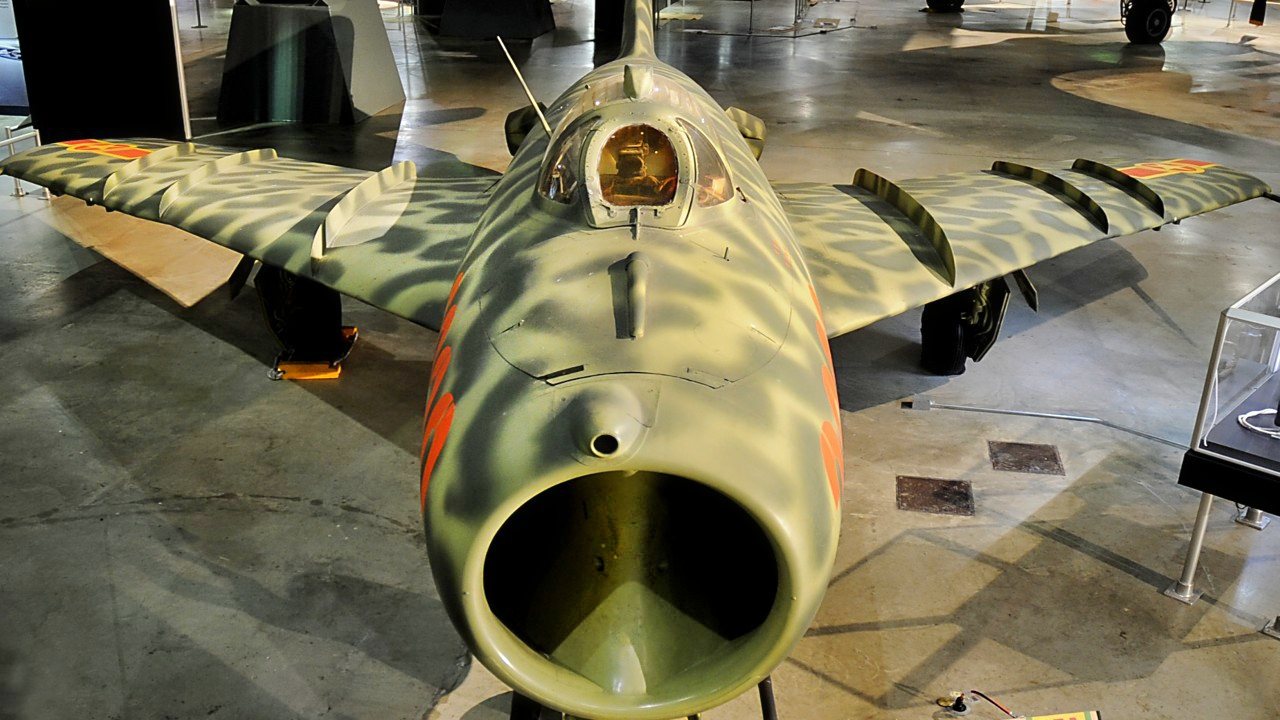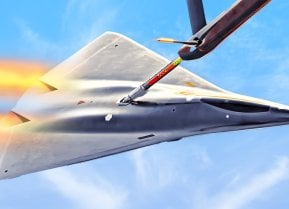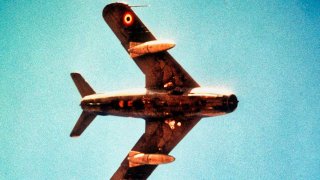MiG-17 Fighter Rise and Fall: From Taiwan to Vietnam's Deadly Skies
The MiG-17 Fresco, a Soviet-designed fighter jet, made its maiden flight in January 1950 and was introduced in October 1952, just missing out on combat in the Korean War.
Summary and Key Points: The MiG-17 Fresco, a Soviet-designed fighter jet, made its maiden flight in January 1950 and was introduced in October 1952, just missing out on combat in the Korean War.
-Initially designed to intercept enemy bombers, the MiG-17 featured improved speed, handling, and armament over its predecessor, the MiG-15.
-Despite a lackluster debut during the 1958 Taiwan Strait Crisis, the MiG-17 proved its worth during the Vietnam War, where its agility and cannon armament made it a formidable opponent against faster U.S. aircraft like the F-4 Phantom and F-105 Thunderchief.
MiG-17: The Soviet Fighter That Surprised U.S. Pilots in Vietnam
The MiG-17 saw extensive use beyond Vietnam in various Warsaw Pact, Middle Eastern, and African countries and remains in service in a few nations today. Aviation enthusiasts can view the aircraft at several museums across the United States.
The MiG-17 Fresco made its maiden flight on January 14, 1950 – five months before the outbreak of the Korean War – and was officially introduced in October 1952. Although intended to replace the legendary MiG-15 in the intense aerial battles against the equally legendary F-86 Sabre, the (relatively) newer jet didn't actually see combat over the skies of Korea.
The Fresco would not be denied its showdown against the Sabre forever, however, as ChiCom-piloted MiG-17s squared off against Taiwanese F-86s during the 1958 Taiwan Strait Crisis.
Unfortunately for the Chinese pilots, that turned out to be a pretty inauspicious combat debut for their fighter, losing 31 of their own versus only two of their adversary's jets.
The MiG-17 was actually designed to intercept enemy bombers as opposed to being intended as a dogfighter. Although it bears a cosmetic resemblance to its MiG-15 predecessor, this successor MiG-17 had more sharply swept wings, an afterburner, better speed and handling characteristics, and is about three feet (one meter) longer.
Additional improvements over the MiG-15 included a thinner wing of greater sweep and a redesigned tail that improved stability and handling at speeds approaching Mach 1, although the plane didn't actually break the sound barrier, maxing out at an airspeed of Mach 0.90 (696 mph/1,120 kmh).
Thumping the Thud Over Nam
Although the Fresco turned in a less-than-stellar performance over Taiwan, it redeemed itself nearly a decade later during the Vietnam War.
Even though both the F-105 and the F-4 Phantom were much faster – both were Mach 2 busters and former world speed record holders before being eventually eclipsed by the MiG-25 "Foxbat" and SR-71 Blackbird – the MiG-17 had the advantage of being much more maneuverable and agile. The MiG-17 also had guns – specifically two 23mm Nudelman-Rikhter NR-23 cannons with 80 rounds per gun and a single 37mm Nudelman N-37 autocannon with 40 rounds per gun – for dogfighting once the missiles were expended.

By contrast, guns were a feature conspicuous by their absence from early versions of the Phantom. Of course, LBJ's and Robert McNamara's highly restrictive rules of engagement for American combat aviators certainly didn't help either.
Indeed, the subsonic MiG-17 would draw "first blood" in the deadly skies over Vietnam; on April 4, 1965, in the first confirmed aerial victories for either side, a Vietnamese People's Air Force (VPAF) MiG-17s shot down two U.S. Air Force F-105s that were attacking the “Dragon’s Jaw” bridge at Thanh Hoa. This was a huge embarrassment for the USAF; then-Chief of Staff (CSAF) General John Paul McConnell was reportedly "hopping mad" over these shootdowns.
In the final head-to-head tally of "Fresco vs. Thud," the F-105 came out on top, with a 27.5-7 air-to-air kill score. Three of the VPAF's 16 aces gained their status in MiG-17s: Col. Nguyen Van Bay, with 7 kills, and Luu Huy Chao and Le Hai with six victories apiece. All-in-all, VPAF MiG-17 drivers claimed 71 aerial victories against U.S. aircraft versus 63 losses and 49 dead Fresco pilots.
MiG-17: Beyond Vietnam
The MiG-17 saw service in a total of 20 counties, namely Warsaw Pact, Middle Eastern, and African nations. Admittedly, Syrian and Egyptian Fresco drivers didn't perform as well in combat as their Vietnamese Communist counterparts, as the Israeli Air Force pilots of the Six-Day War and Yom Kippur War weren't accursed by LBJ-style ROEs. Even today, the supposedly obsolescent MiG-17 remains in service within the Democratic Republic of the Congo, Guinea, Mali, Madagascar, Sudan, Tanzania, and North Korea.
For my fellow Stateside aviation museum buffs out there who aren't planning a vacation to any of these countries anytime soon, you can view a static display of the Fresco at the Museum of Aviation in the vicinity of Robins AFB in Warner Robins, Georgia, the Museum of Flight in Seattle, Washington, and the National Museum of the United States Air Force at Wright-Patterson AFB in Dayton, Ohio.
About the Author
Christian D. Orr is a former Air Force officer, Federal law enforcement officer, and private military contractor (with assignments worked in Iraq, the United Arab Emirates, Kosovo, Japan, Germany, and the Pentagon). Chris holds a B.A. in International Relations from the University of Southern California (USC) and an M.A. in Intelligence Studies (concentration in Terrorism Studies) from American Military University (AMU). He has also been published in The Daily Torch and The Journal of Intelligence and Cyber Security. Last but not least, he is a Companion of the Order of the Naval Order of the United States (NOUS).
Image Credit: Creative Commons.


